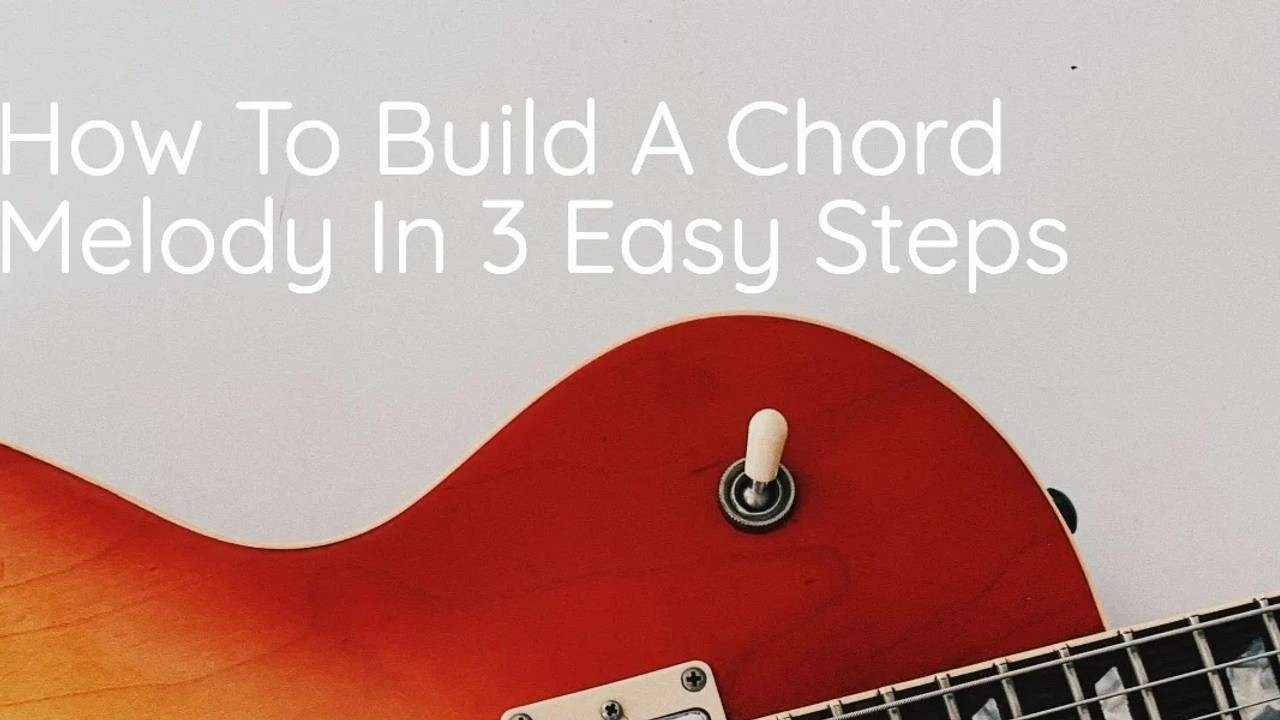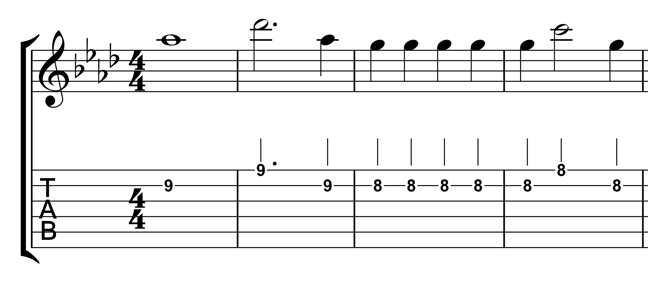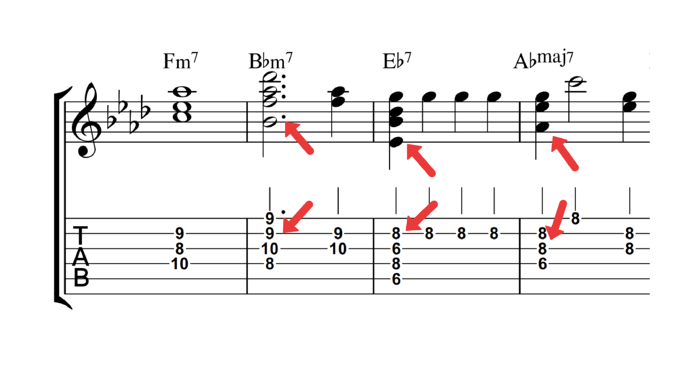
How To Build A Chord Melody in 3 Easy Steps
Nov 27, 2016Guest Post by Ny Fanilo Andrianjafy
What is a Chord Melody?
On guitar, a chord melody is an arrangement of a song that includes both the melody and the harmony (chords) simultaneously. Chord melodies are often used in formats where guitar is the sole harmonic instrument: for example, solo guitar, or guitar trio (guitar, bass, and drums).
In this blog post, I will walk you through a 3-step process to build a chord melody. We will use the first 8 bars of the jazz standard "All The Things You Are" as our example.
How to Build a Chord Melody:
- Play the Melody on the Top 2 Strings
- Harmonize the Melody
- Break Things Apart
Get the PDF of the examples of all three steps (and a bonus one) here:
"How To Build A Chord Melody in 3 Easy Steps" Examples PDF
Join our Community here.
1. Play The Melody On The Top 2 Strings
This first step may sound like a no-brainer, but it is the most important step when you build a chord melody. Why? Because your arrangement needs to put emphasis on the ... melody! Otherwise, your audience will not recognize the tune you are playing.
Your first task is to play the melody on the top 2 strings. Depending on the song you choose, it can be either very easy or challenging.
Here is how it look on All The Things You Are:

Once again, I am going to stress the importance of this step. I encourage you to take all the time you need to learn the melody. How do you know when you know the melody? Here's a hint: you can sing it from memory without hesitation.
One other tip I can give you is to avoid the temptation of using a fake book. As useful as they are, they will not help your memory. Use recordings instead! You should listen (many times) to 5-10 versions of the standard you are arranging. Choose versions with and without lyrics, to give you an idea of the various ways it can be interpreted.
2. Harmonize The Melody
Wait! Before going onto the second step, PLEASE take the time to learn the chord progressions as well as you learned the melody. There are many ways to learn the progressions. My personal recommendation is to learn it again by ear, using various recordings.
Your second task is to identify the right chords inversions have the melody note on top.
You will discover inversions, extensions, substitutions, and new shapes during this step. You can use full barre chords, partial chords and alternate between the two. If they do not work, try the drop-2’s! By the end of the day, you will be happy that you decided to build a chord melody. You'll have learned all of this information as well!
You may not always be able to find a chord that fits. When it happens, do not play any chord at all! Sometimes a small section of the melody is all that is needed. Playing a chord melody does not mean that you're obliged to align a chord to each beat of the melody, either. You can (and will, I guarantee) always go back to your own chord melody arrangement later and rework it.
Here is how it looks in practice:

Notice the different shapes you can use.
Challenge yourself! Question your knowledge of chords and be creative. Do not stop here, because the best is yet to come!
3. Break Things Apart
Now that you have a good knowledge of the melody and harmony, it is time to break things apart and add some rhythm. There are two sub-steps to this:
Play The Chord Before Or After The Melody Note
Again, you do not need to align each melody note with a chord. You will either be overwhelmed and miss a beat (this should be your worst fear), or sound like you are vomiting pages of Chord Chemistry. Play the chords before of after the melody will start giving it movement without much change.
Note: You should still check out Ted Greene's book. You will discover all sorts of chords.
Strip Away Some Chords
The idea is simple: Play the melody unharmonized for a few beats.
I just heard some of you saying "What?" Hear me out, it will make your notes sound like a voice singing a capella (without accompaniment) or a mini-solo. It's an effective way to give some feeling to your arrangement.
Combining the two ideas over our example tune looks like this:

But Wait There's More!
Here is a bonus step: add moving lines.
Moving lines are notes you will want to play in the middle register of your guitar to add movement. To get started: play around your 3rds & 7ths and add chromatic lines and/or scale lines. A lot of great guitarists play with this idea such as Joe Pass and Martin Taylor.
Joe Pass

Martin Taylor
Check out the PDF for an example of this bonus step!
Conclusion
What did we cover?
- Always remember that the melody is the most important element of a chord melody arrangement.
- Harmonize the melody of your standard with different flavors of chords (inversions, extensions, substitutions).
- Break things apart to add movement and add lines.
Do not forget to get the PDF with the examples to have a better idea of the progression of the 3 steps.
"How To Build A Chord Melody in 3 Easy Steps" Examples PDF
Join our Community here.
Try these 3 steps over a part or the entirety of your favorite standard and let us know how you did in the comments below.
Guest Post by Ny Fanilo Andrianjafy
Ny Fanilo Andrianjafy is a guitarist living in Canada. His main influences are traditional music from his birth country, Madagascar, and blues. He discovered Jazz at the age of 19 and has been in love with it ever since.











